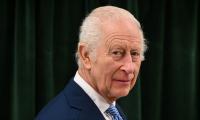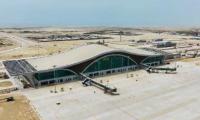LAHORE: In a major Special Investment Facilitation Council’s (SIFC) push towards renewable energy, Pakistan has set sights on doubling its share by 2031.
On the energy front, it is aimed at doubling renewables share in the power mix, including hydroelectric, from the present 31 percent to 62 percent by 2031 or in the next eight years.
An SIFC document termed it Pakistan’s planned energy transition, targeting to curtail reliance on fossil fuels and transition towards green energy.
SIFC intends to boost overall power generation capacity from the present 45 GW to 63 GW in 2031. From this expanding generation capacity, SIFC observed a huge renewable energy potential of 3,300 gigawatts in the country, including 2,900 GW of solar and 340 GW of wind, while hydropower potential is estimated at 60 GW. Keeping in view this massive potential, Pakistan’s plan is to expand its RE share in the energy mix to 62 percent from the existing 31 percent. The hydroelectric share is projected to increase from the present 24 percent to 33 percent, solar from the present 02 percent to 19 percent, and wind from the present 04 percent to 10 percent.
Portraying the transformation of the energy mix up to 2031, SIFC projected a 1.5-times increase in overall energy demand — from 90 to 125 million tonnes of equivalent oil — and a 1.7 percent per annum increase in national gas demand — from 4.860 to 5.6 billion cubic feet per day by 2030, scaling up installed power capacity to 51 gigawatts by 2025 due to growing needs, increasing oil demand by 2.4 percent per annum, an estimated gas demand-supply gap of 4 billion cubic feet per day (BCFD) by 2030, an expansion in the electricity transmission network by 20,000 km lines, and generation and transmission gaps of 15.2 gigawatts due to system limitations.
Titled “The Land of Immense Potential and Opportunities,” the document outlines investment opportunities in the country in the four sectors: agriculture and livestock, information technology, mines and minerals, and energy. Referring to prospective energy needs, it underscores the expansion of power generation and transmission capacities and the import of additional gas.
Besides, Pakistan is ideally located to connect energy-rich Central Asian Republics (CARs) with the world. Plentiful opportunities are available to invest in renewable energy projects (hydel, solar, and wind) and strategic oil and gas refinement and transmission systems, it adds.
It mentioned various key facts about the energy sector. As much as 53 percent of refined petroleum oil is imported, which stood at $12.1 billion in 2022. Pakistan has been blessed with coal reserves of 186 billion tonnes, which is 50 billion tonnes of oil equivalent. The generation and transmission gaps stand at 15.2 gigawatts due to system limitations.
The document outlined the following investment opportunities: solar PV projects in Punjab (600 to 1,200 MW), Diamer-Bhasha Dam Hydro Power Project (4,500 MW), transmission line projects in Punjab and Sindh (500 KV), reactive power compensation devices (2,000 MVAR), battery storage for frequency regulation (1,000 MWh), power projects at Thar Coal Block II, Sindh (1,320 MW), hydropower projects at Rajdhani (132 MW), Aramco Oil Refinery, and Turkmenistan, Afghanistan, Pakistan, and India’s (TAPI) gas pipeline.
Counsel for Parvez Elahi and Bhatti requested longer adjournment of hearing
According to official documents, Muhammad Kamran secured second place with 663 marks in written examination
Hutchinson was star witness of select committee that investigated Trump, and on which Cheney served as vice-chair
President-elect previously ditched his trademark bouffant for a much flatter and more drawn hairstyle in 2019
Analysts say India-US ties under Trump’s second administration will have to pass test of looming tariff war
Muhammad Khan will remain on this post till his retirement date 30th April 2025







